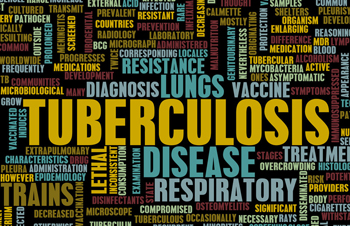 According to the World Health Organization (WHO) childhood tuberculosis (TB) constitutes 6% to 10% of all TB cases in the world every year. It is also estimated that more than 74,000 children die due to this disease in each year. As per the statistics of the Center for Disease Control and Prevention (CDC), out of the 9,945 TB cases were reported in the U.S., 486 (4.9%) were pediatric. Childhood TB is preventable and curable if it is identified and treated appropriately.
According to the World Health Organization (WHO) childhood tuberculosis (TB) constitutes 6% to 10% of all TB cases in the world every year. It is also estimated that more than 74,000 children die due to this disease in each year. As per the statistics of the Center for Disease Control and Prevention (CDC), out of the 9,945 TB cases were reported in the U.S., 486 (4.9%) were pediatric. Childhood TB is preventable and curable if it is identified and treated appropriately.
CDC’s epidemiology statistics of childhood TB in the United States during 1993-2012 shows TB case rates slightly fell or stayed same for all pediatric age groups in 2012 while comparing with the rates in 2011, age less than 1 (1.5% from 1.8%), age 1-4 (1.3% from 1.7%), age 5-9 (0.5%), age 10-14 (0.5% from 0.7%). TB rates were slightly down for all U.S. born age group except those between 5 and 9 (0.4% from 0.3) and significantly higher for foreign age group comprising age less than 1 (22.4% from 5.6%) and age 5-9 (6.7% from 4.5%).
Though children can develop TB at any age, serious cases are most common among those between 1 and 4 years of age. Also, the children get sick with TB very quickly when infected with TB bacteria. It is possible to identify the risk of developing this infectious disease in children using simple methods and screening. CDC puts forward the following strategies to prevent and treat childhood TB:
- Contact Tracing – A multidisciplinary TB team works to identify people infected with TB but show no clinical evidence, identifying BCG vaccination candidates, and detecting the source patient. Usually, adults pass tuberculosis on to the children rather than other children.
- TB Screening – TB screening tests involve a tuberculin skin test and blood test. The American Academy of Pediatrics (AAP) recommends conducting an immediate tuberculin skin test on children only if:
- They have been in contact with someone having active or suspected TB
- They have immigrated from a TB endemic country
- A clinical finding or a chest radiograph indicates TB
- Preventive Therapy – BCG vaccine is usually given to infants and small children as part of preventive therapy if they are living in countries where TB is common. However, BCG is not generally recommended in the U.S. owing to the low risk of infection.
Once the child is diagnosed with TB using screening and contact tracing, physicians can either give advice or treatment or refer the child to a pediatrician. Pediatric TB experts provide services to treat TB in children and manage the condition in infants and young children. It is important that healthcare providers – nurses and physicians – understand how to properly administer and interpret the results of a TB skin test to ensure accurate documentation. This is crucial to improve the quality of care as well as reimbursement.

